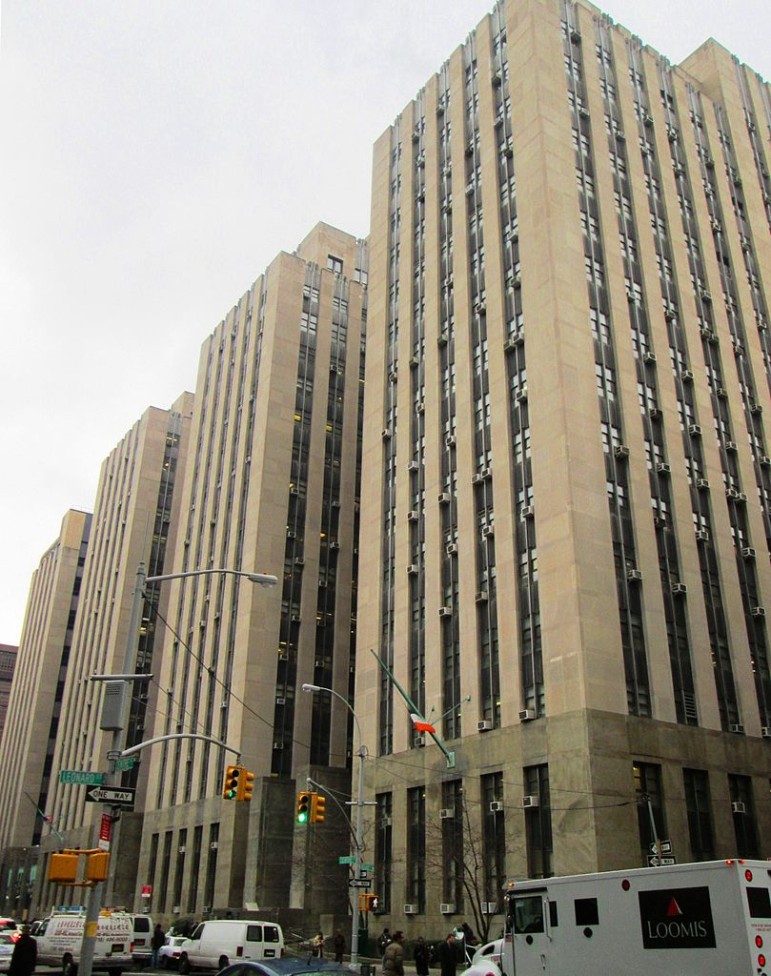
Beyond My Ken
The New York Criminal Courts building at 100 Centre Street, where many defendants plead guilty to crimes and violations not realizing that the punishment may go way beyond any incarceration time or fine.
This is a sidebar article to City Limits’ investigation of New York State’s “certificate of relief” program. Read the main story here.
* * * *
The obscurity of the Certificates flows from the obscurity of the laws that discriminate against people with convictions. Scholars call those laws “collateral consequences,” and Certificates were created to help people get around them. But those without a Certificate face nearly 1,300 state laws, according to the American Bar Association’s database, that hinder people who’ve already done their “hard time.”
Marc LaCloche, for example, learned to cut hair in a maximum security prison. But when he got out, the state refused to issue him a license to ply the trade the state had taught him, making headlines.
Discriminating against someone with a conviction can be a prudent way to minimize someone’s temptation to do wrong—no necrophiliacs as funeral directors, say—and their potential danger to other people. But the laws on collateral consequences are sprawling, and they can seem arbitrary.
That’s partly because collateral consequences are sometimes triggered by any conviction—anything from a shoplifting to murder; from insider trading to drunk driving—and aren’t specifically tied to the crime a person committed. For example, people are barred from getting a license to rehabilitate wildlife for three years following any misdemeanor or felony conviction—and not just one for animal cruelty, for instance. In some cases, the punishment seems to not fit the crime.
And even when there isn’t a bar against people with criminal histories, state agencies sometimes require that people have “good moral character” to get a license. And advocates say that’s just a sneaky way of discriminating against people with convictions.
Despite the stakes, people are often stumbling into these collateral consequences, said Jason Hoge, a lawyer who’s worked on employment discrimination cases and as a public defender. Especially when it comes to lower-level offenses, prosecutors often offer people plea deals that let people avoid jail, or fines.
“But that conviction’s going to be on your record for the rest of your life,” he says. “People walk in, walk out with no consequences other than that some bomb is going to go off in five years when they apply for stuff”—like a license, or public housing, for which they suddenly find themselves ineligible because of that forgotten conviction.
Certificates are designed to help people facing those problems, and so advocates and government agencies—like New York City’s Department of Probation—are working to get them into people’s hands. But Hoge argues that if more people had certificates it could weaken the power they have. The idea that they’re proof that someone is rehabilitated is only credible because they’re hard to get.
But that thwarts their other purpose, which is to help people rehabilitate themselves. That’s why people are technically eligible to get a Certificate at their sentencing, before they’ve even been punished. (There’s no data on how often judges issue Certificates. Anecdotally, it’s rare.)
Certificates help undo the blanketing consequences of getting convicted. But why not repeal the laws that create those blanketing consequences, in order to make them more targeted? Why not let judges or the Department of Corrections craft specific collateral consequences instead of forcing people to opt-out of many, sometimes unrelated consequences through the certificate system?
Whatever the logic, advocates say those laws aren’t likely to ever get repealed. That’s partly because there are so many of them, and it’d be an enormous project. But more than that, anything that seems “soft on crime” remains politically radioactive.
“It’s much more fruitful to talk about relief [through Certificates] than talk about removing all these barriers,” says Margaret Love, a lawyer specializing in the restoration of rights, and sentencing and corrections policy.








